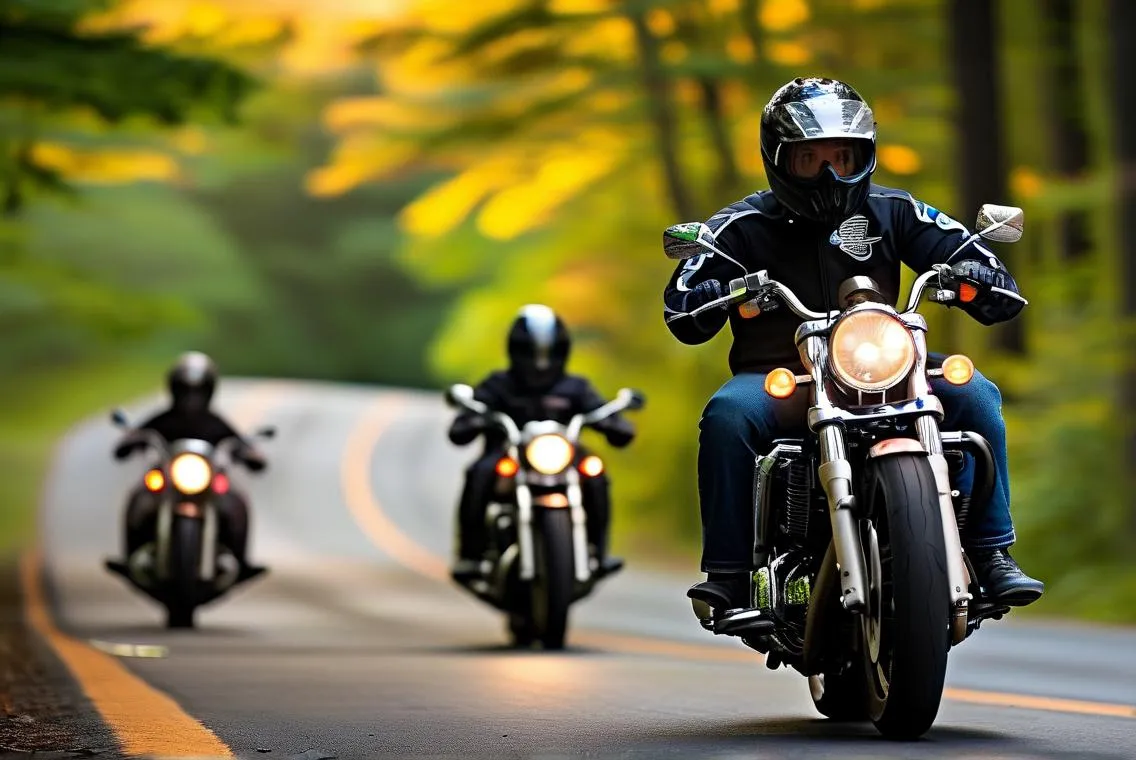Riding a motorcycle offers unmatched freedom on Maryland’s scenic roads, but it also demands specialized skills to navigate safely. The Maryland Motorcycle Safety Program (MSP) provides structured training that not only builds confidence but also delivers tangible benefits like insurance discounts and licensing advantages. Here’s what every aspiring or current rider needs to know about this state-approved program.
How the Maryland Motorcycle Safety Program Works
Administered by the Maryland Motor Vehicle Administration (MVA), the MSP offers courses designed for riders of all experience levels. Whether you’re a beginner seeking a motorcycle license or an experienced rider refining advanced techniques, the program follows a tiered approach:
1. Basic Rider Course (BRC): A 15-hour entry-level program combining classroom instruction and on-cycle training. Topics include clutch control, turning, braking, and hazard avoidance.
2. Advanced Rider Course (ARC): For licensed riders, this 8-hour course focuses on collision prevention, cornering strategies, and situational awareness.
3. Three-Wheel Motorcycle Course: Tailored for riders of trikes or sidecar-equipped motorcycles.
All courses use MVA-approved curricula and are taught by Motorcycle Safety Foundation (MSF)-certified instructors.
Key Benefits: Training & Savings Combined
The MSP isn’t just about skill development—it’s a gateway to financial perks and streamlined licensing:
– License Test Waiver: Complete the BRC, and you’ll bypass the MVA’s on-cycle skills test for your Class M license.
– Insurance Discounts: Many providers (e.g., State Farm, GEICO) offer 10–15% premium reductions for MSP graduates.
– Safety First: Data from the National Highway Traffic Safety Administration (NHTSA) shows trained riders are 50% less likely to be involved in crashes.
What to Expect During Training
MSP courses emphasize hands-on learning in controlled environments:
– Classroom Sessions: Interactive modules cover Maryland traffic laws, protective gear selection, and risk management.
– Range Exercises: Practice low-speed maneuvers, emergency stops, and swerving techniques on provided motorcycles.
– Skill Assessments: Final evaluations test both knowledge (written exam) and riding proficiency.
Courses run year-round at community colleges, military bases, and private training sites statewide. Fees range from $50 to $380, with subsidies available for Maryland residents through the MVA’s Highway Safety Office.
Why Choose State-Certified Training?
- Credibility: The MSP meets rigorous standards set by the MSF and Maryland MVA—unlike unaccredited online courses.
- Modern Fleet: Training motorcycles are maintained to DOT specifications, ensuring reliability during lessons.
- Post-Course Support: Graduates receive access to refresher materials and exclusive riding events.
Enrollment Checklist
- Eligibility: BRC participants must be at least 15 years old (under 18 require parental consent).
- Gear Requirements: Bring a DOT-approved helmet, eye protection, long sleeves, gloves, and over-ankle boots.
- Registration: Secure your spot via the MVA’s MSP portal, where you can compare schedules by location.
Frequently Asked Questions
Q: Do I need my own motorcycle?
A: No—the program supplies training bikes suitable for beginners.
Q: How long does certification last?
A: Completion cards never expire, but insurers may require periodic refreshers for continued discounts.
Q: Can out-of-state residents enroll?
A: Yes, though fee structures and licensing benefits vary.
Final Thoughts
The Maryland Motorcycle Safety Program balances practicality with proven safety outcomes. By investing 15–20 hours in certified training, riders gain lifelong skills while unlocking savings that offset course costs within months. For new riders, it’s the safest path to licensure; for veterans, it’s a strategic refresh to stay sharp on increasingly crowded roads.
Ready to start? Visit the MVA’s official MSP page or contact local training providers for seasonal promotions and availability updates.




Leave a Reply